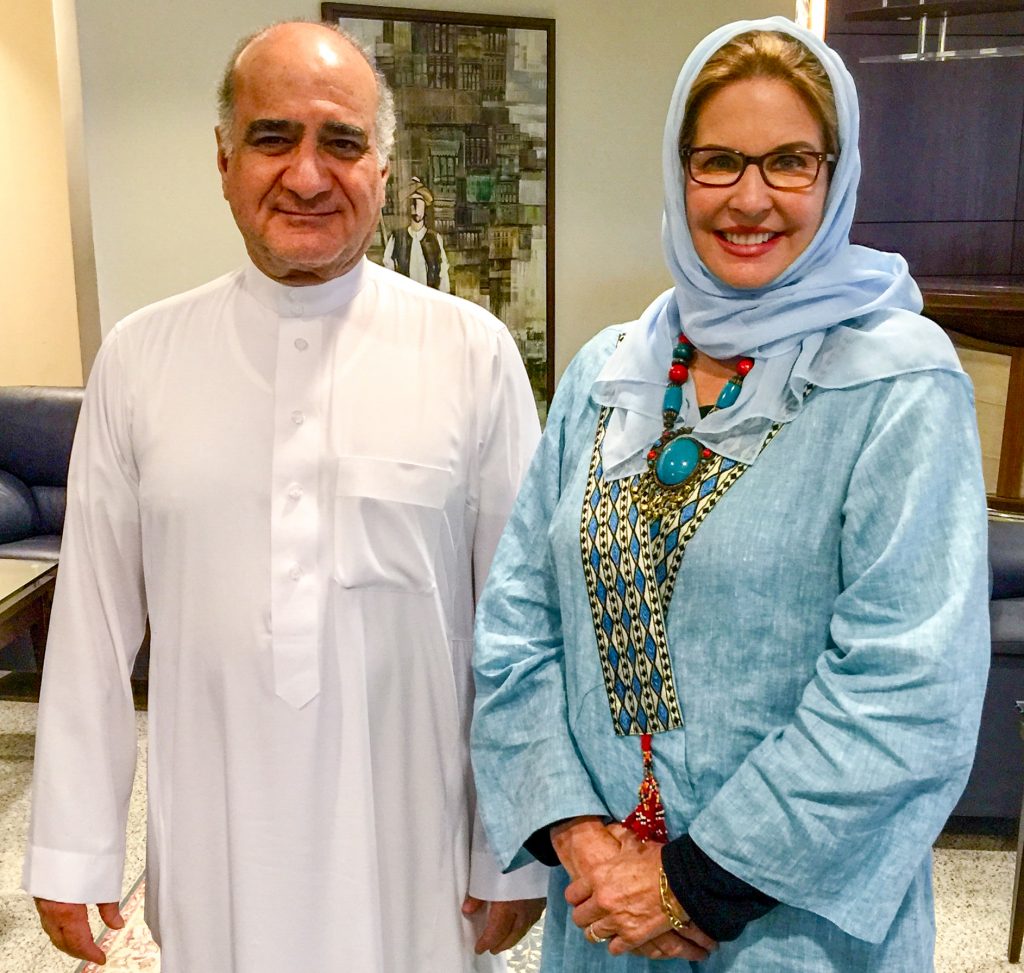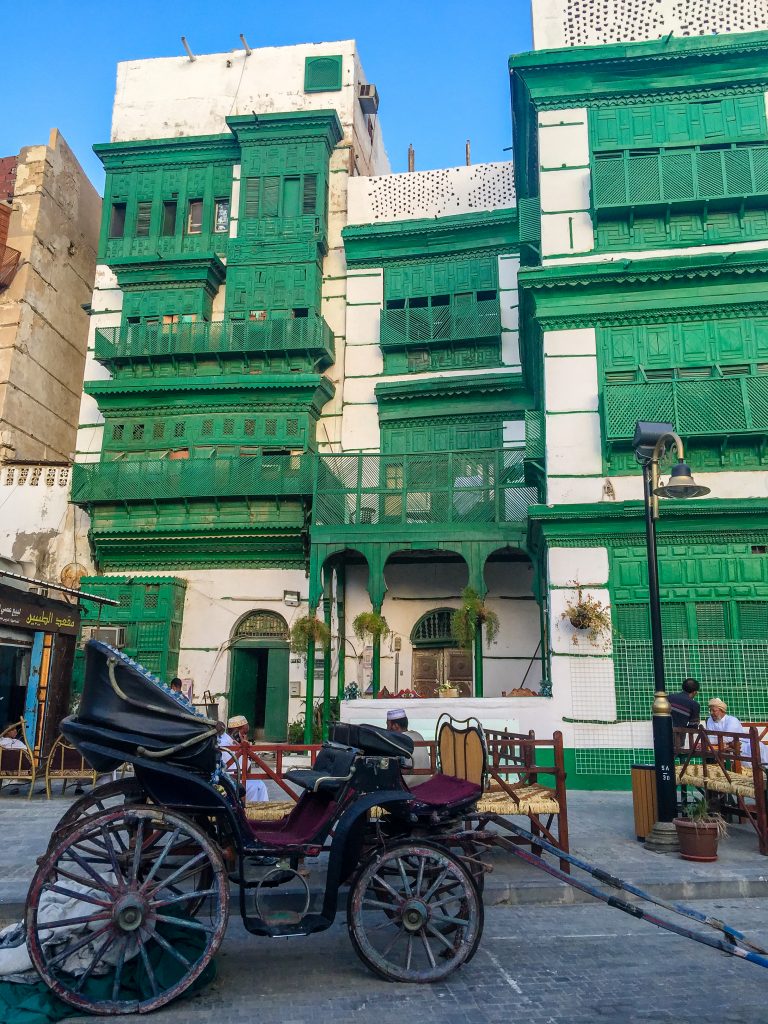Historic Jeddah is situated on the eastern shore of the Red Sea, and is a UNESCO World Heritage Site. From the 7th century AD it was established as a major port for Indian Ocean trade routes, channeling goods to Mecca. It was also the gateway for Muslim pilgrims to Mecca who arrived by sea. These twin roles saw the city develop into a thriving multicultural center, characterized by a distinctive architectural tradition, including tower houses built in the late 19th century by the city’s mercantile elites, and combining Red Sea coastal coral building traditions with influences and crafts from along the trade routes. The area is an outstanding reflection of Red Sea architecture.
Old Jeddah is known as Al-Balad (translated to “The Town” in Arabic). It is an open air, living museum. Al-Balad is famous for brightly colored window and door covers called Roshan and Rawashin. The traditional houses have balconies with perforated screens that allow air to circulate and cool the homes. They are intricate and alluring. The shield of latticework allows the inhabitants to sit in shaded privacy while gazing out on the bustling street life. In the past, the balconies were critical for women in need of privacy. Functionally, the screens served and continue to serve as curtains, windows, and air conditioners. The screens’ filtered light subdues the effect of the strong desert sun. It also minimizes the intrusion of undesired elements of the landscape, such as dust and sand.
Explore Paige Peterson's full photo essay on her visit to Madain Saleh, one of Saudi Arabia’s hidden treasures, here: Jeddah: Gateway to Mecca and a Living Cultural Artifact.

About Paige Peterson:
Paige Peterson visited Jeddah on a recent trip to Saudi Arabia in her capacity as Executive Vice President of the Huntsman Cancer Foundation, a position she has held since 2006, and as a member of the Board of Directors of the National Council on U.S.-Arab Relations.
The Huntsman Cancer Institute, founded by the late Jon M. Huntsman, Sr., is a leader in the study of cancer genetics. Its researchers have discovered more inherited cancer genes than any other cancer center. Its goal is to eradicate cancer worldwide. Ms. Peterson facilitated the partnership of Huntsman Cancer Institute and King Faisal Specialist Hospital and Research Center in Riyadh, Saudi Arabia. They are now collaborating on cancer research.
As a member of the Board of Directors of the National Council on U.S.-Arab Relations, Ms. Peterson shares the Council’s commitment to improving American knowledge and understanding of the Arab world. As a board member, she participates in the C3 Saudi-American Healthcare Forum, created to advance healthcare diplomacy.
She has written extensively about the Middle East. Her work has appeared in American and Arab media.
Before joining Huntsman, Ms. Peterson worked closely with Christopher Cerf, an award-winning author and television producer. She was a researcher and editor on several of Cerf’s books, including The Experts Speak and Mission Accomplished. The two were co-directors of a Welcome Books’ imprint, Cerf & Peterson, and co-authored a bestselling book, Blackie, The Horse Who Stood Still, which Ms. Peterson also illustrated. She also illustrated Jesse Kornbluth’s adaptation of A Christmas Carol, by Charles Dickens.
Born in Marin County, California, Ms. Peterson is also a painter who is represented by Gerald Peters Gallery in New York City. The prestigious Guild Hall Academy of the Arts in East Hampton has honored her with a lifetime membership.
Ms. Peterson lives in New York City.


